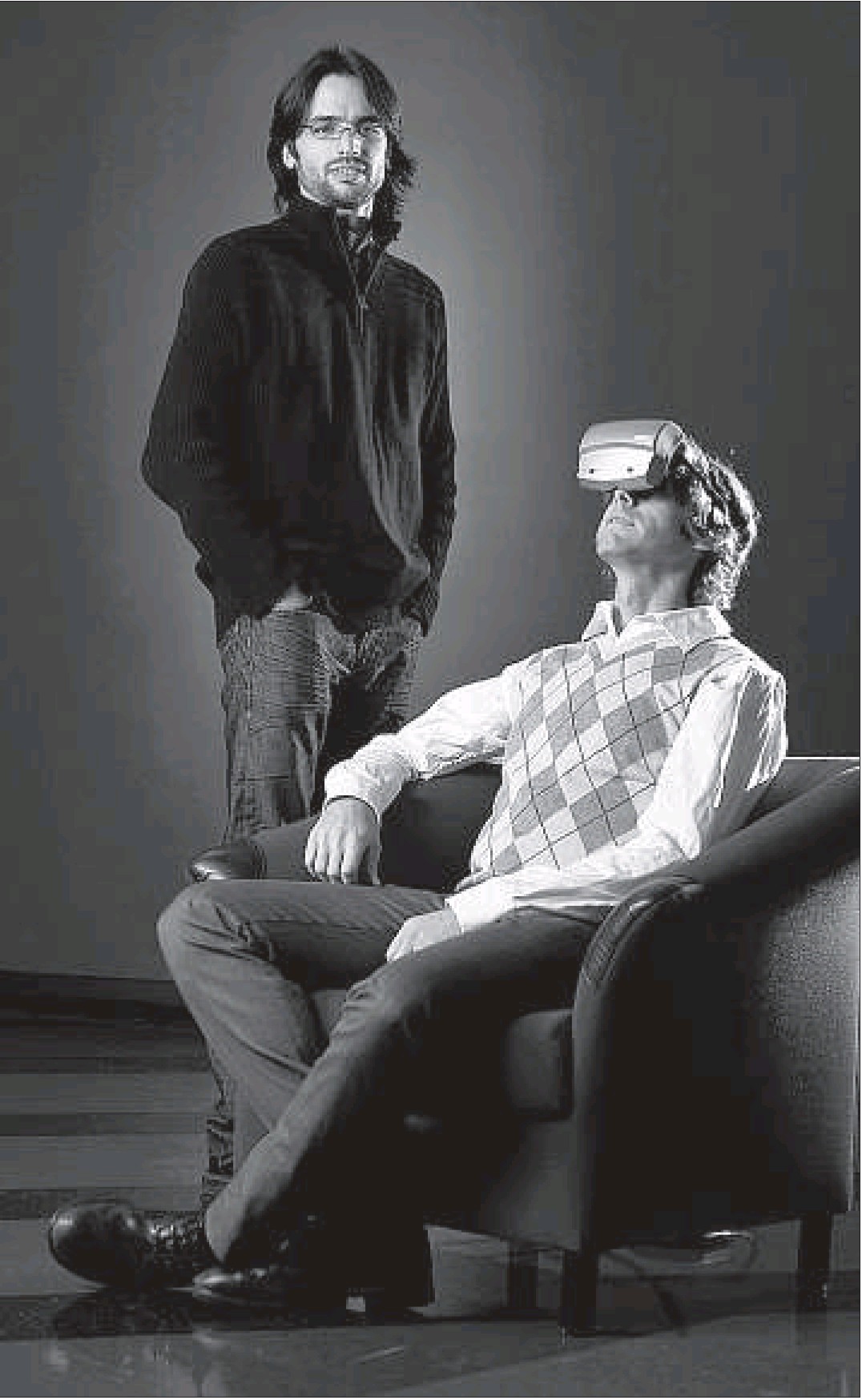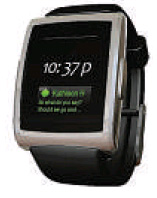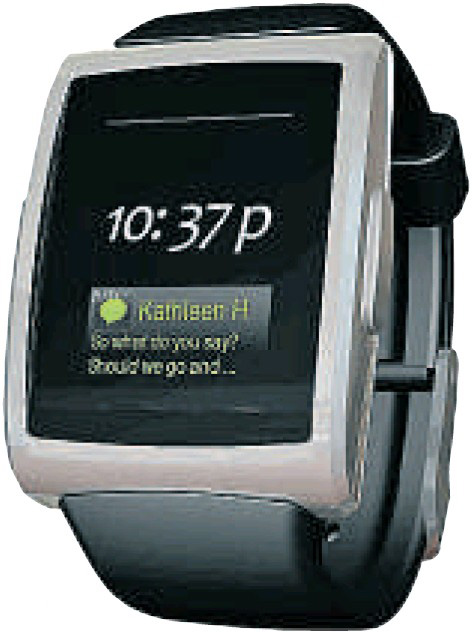Its proponents predict it will change everything, allowing users to point a camera at a church and read its history
Roberto Rocha
Sun

People are coming to Arcane Technologies’ Martin Dube (left) and Jean-Francois Lavoie to ask about their augmented-reality helmet. — FRANCIS VACHON CNS
A bit over a decade ago, before the Internet became a household staple, virtual reality was the next great wave of technology. Magazines happily foretold that every home would have a VR helmet with motion-sensing gloves, letting families escape to simulated environments right from home.
Today, images of people wearing those massive goggles are as kitsch a miscalculation of the future as The Jetsons. After all, why settle for a virtual reality when you can augment the real thing? Why immerse in a sub-par simulated world if you can take the your real surroundings and upgrade them with all the world’s information?
Hence the dream of augmented reality, a happy confluence of technologies that is starting to creep out of university labs into consumer awareness.
Simply put, augmented reality is this: a live video feed of the real world superimposed with computer-generated images that move in accordance with the camera’s motion. The goal is to make, say, an animated dragon look like it’s part of the landscape.
Its proponents predict it will change everything, from education (point your camera at a church and read its history) to games (hunt zombies walking around in your house) to advertising (see the day’s sales when you aim your camera at a store) to training (gaze at the tangled bowels of an airplane engine and an animated screwdriver shows the part that needs to be replaced).
Expect to hear a lot about it next year, observers say, as cellphones increase in sophistication and computing power, and as advertisers rush to jump in the newest trend in consumer technology.
Though augmented reality has existed in labs for 15 years, the miniaturization of gadgets, both mobile and fixed, is making it ever more accessible.
Arcane Technologies, a company in Quebec City, finally shrunk its AR gear enough for practical use by military and industry.
It consists of a head-mounted display with cameras that take in the surroundings and add more information before the user’s eyes. In one demonstration the device superimposes brain scans onto a Styrofoam head. This allows a doctor to view medical images by manipulating models of the body in the physical world instead of a computer screen.
The company has sold a few units to the U.S. military and to a car company in South Korea. It’s still not making money, but co-founder Jean-Francois Lavoie expects this to change soon.
“People used to think what we do is really cool but they didn’t see what could be done with it,” he said. “Now they’re coming to us and want to use it. They saw videos of it online and know what it can do.”
While this is aimed at commercial use, it’s the evolution of mobile phones that’s accelerating awareness of AR among consumers. The latest models sport powerful graphics chips, global positioning system antennas, internal compasses and motion sensors, allowing augmented reality to be served on the go.
These features, of course, describe the Apple iPhone and its tiny cohort of competing devices, which is where we’re seeing the first uses of mobile AR. A few mobile applications — apps in tech-speak — are already available and more are in the pipeline.
One called Wikitude fetches information from the Internet and overlays it on whatever the phone is pointed at. Aim it at an Austrian castle and a descriptive speech bubble appears with text from Wikipedia.
“These apps are cute, but they’re not very compelling,” said Blair MacIntyre, director of the Augmented Environment Labs at the Georgia Institute of Technology. “They’re very specific to one type of information.”
He envisions a future where all information is available through one application, much like the web browser is the portal to everything on the Internet. Image-recognition software will be able to detect shapes and faces and fetch public info about them.
A company in Sweden is developing an app that recognizes a person and lets you access her business profile on LinkedIn, her Twitter feed and her Flickr photo album.
But this will take some time to reach the hands of consumers. Devices need to be a little stronger and the companies developing them could use a little more encouragement.
“We’re past this hump where people are seeing AR is a viable technology and investing in it,” MacIntyre said. “Once companies get interested, they will devote resources to fund university research to do this kind of work.”
ABI Research predicts that revenue from AR will grow from $6 million US last year to more than $350 million US in 2014. The growth will come largely as advertisers pay software developers to create apps that promote a brand in some way.
Lego is already doing this. At some stores in the U.S., a buyer can pick up a Lego box, point it at a screen, and see an animation of the assembled toy.
The report also says advertisers will exploit AR by “geo-tagging” objects in the real world. This means programming the precise location of objects for the benefit of a portable GPS device.
For the Wikitude app to be of any use, Wikipedia articles have to be geo-tagged so it knows where you are and which way you’re facing to deduce that you are, in fact, looking at an Austrian castle.
This necessarily involves crowd participation to geo-tag the world’s information. The study by ABI envisions the development of global databases of geo-tagged information that AR apps can access.
“Governments, businesses, and individuals all will contribute information into such databases, so end-users will be able to view information on notable buildings, retail sales or special events, or simply to mark locations of interest,” a summary of the study said.
Another obstacle is the device makers themselves. Apple, for instance, has been shy to give third-party software full access to the phone’s inner workings. Apps can overlay information over live video, but not to access the data in the video itself. This prevents features like facial recognition.
And then there’s the whole question of privacy. What if some people don’t want to be recognized and downloaded onto cellphones?
When asked if AR is simply another hype like VR once was, its proponents are quick to swear to its long-term viability.
“When you walk down the street it’s usually pretty boring,” said Ori Inbar, founder of AR game maker Ogmento in New York City. In fact, he entered the field so he could find a way to blend his kids’ love of the computer screen with the outside world.
“With AR, everything around you comes to life. You can be part of a story that you experience when you’re doing everyday tasks,” he said.
© Copyright (c) The Vancouver Sun









